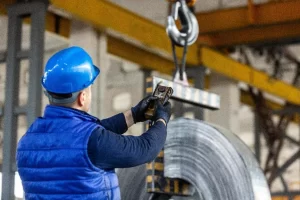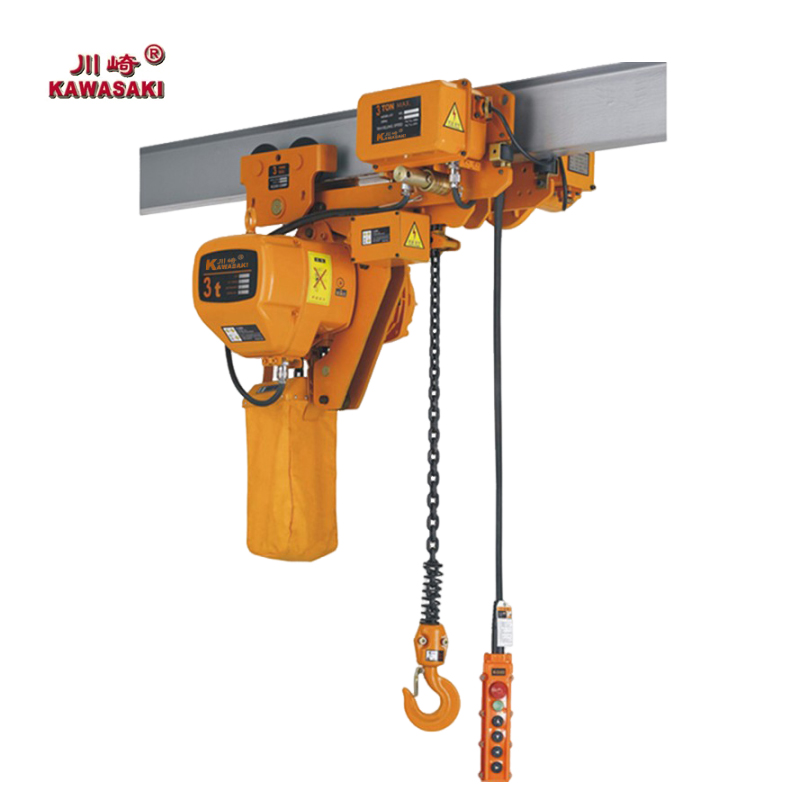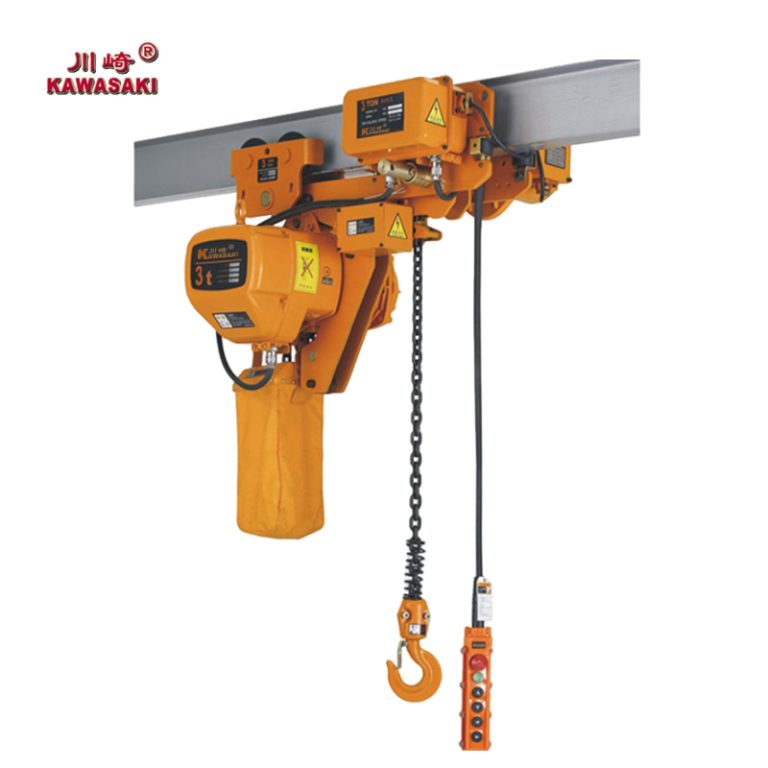Introduction
Electric hoists are essential lifting devices used in various industries to facilitate the movement of heavy loads. One of the most critical components of an electric hoist is its braking system, which ensures safety, control, and efficiency. Two commonly used braking systems in electric hoists are the electronic brake and the side magnetic brake. Understanding the differences between these braking mechanisms is crucial for selecting the most appropriate hoist for specific applications.
Overview of Braking Systems in Electric Hoists
Braking systems in electric hoists are designed to hold and stop loads safely. They prevent unintended movement and ensure precise control during lifting and lowering operations. The primary types of braking systems used in electric hoists include:
- Electronic Brake
- Side Magnetic Brake
- Mechanical Brake
- Hydraulic Brake (less common in electric hoists)
This article focuses on the electronic brake and side magnetic brake, explaining their working principles, advantages, disadvantages, and applications.
Electronic Brake
Working Principle
The electronic brake operates using electrical signals and control systems to regulate the braking force. It is integrated with the hoist’s motor and relies on electrical circuitry to engage or disengage the braking mechanism. When power is cut off or the hoist is stopped, the brake engages automatically to hold the load in place.
Electronic braking is achieved by using dynamic braking, regenerative braking, or eddy current braking. These methods convert kinetic energy into electrical energy or heat, which is then dissipated or fed back into the system.
Advantages of Electronic Brakes
- Smooth Operation: Electronic brakes provide smooth and precise braking action, reducing load swings and increasing control.
- Reduced Wear and Tear: Since there are fewer mechanical components involved, electronic brakes experience less physical wear compared to traditional mechanical brakes.
- Energy Efficiency: Regenerative braking systems convert kinetic energy into usable electrical energy, improving energy efficiency.
- Automatic Control: The braking force can be adjusted electronically, allowing for better control in various load conditions.
- Minimal Maintenance: Electronic braking systems require less frequent maintenance due to the absence of friction-based components.
- Instant Response: These brakes engage and disengage quickly, providing immediate stopping power when needed.
Disadvantages of Electronic Brakes
- Dependence on Electrical Components: Since electronic brakes rely on electrical circuits and sensors, failures in the electrical system can compromise braking performance.
- Higher Initial Cost: The advanced technology used in electronic brakes can make them more expensive than traditional braking systems.
- Complexity in Troubleshooting: Diagnosing and repairing electronic braking systems requires specialized knowledge and tools.
- Sensitivity to Power Failures: If there is a power failure or surge, the electronic braking system may not function properly unless a backup power source is available.
Applications of Electronic Brakes
- High-precision lifting applications (e.g., assembly lines, laboratories, and clean rooms)
- Automated material handling systems
- Environments requiring energy-efficient operations
- Industrial cranes with regenerative braking capabilities
Side Magnetic Brake
Working Principle
A side magnetic brake is a type of electromagnetic brake that uses a magnetic field to create braking force. It consists of a magnetic coil, brake disc, and friction pad. When the hoist is in operation, the magnetic coil is energized, pulling the brake disc away from the friction pad, allowing free movement. When power is cut off, the magnetic force dissipates, and a spring mechanism engages the brake, bringing the hoist to a stop.
Advantages of Side Magnetic Brakes
- Fail-Safe Operation: Since the brake engages automatically when power is lost, it ensures safety in case of electrical failures.
- Reliable Performance: Magnetic brakes have been widely used in hoists due to their proven reliability and effectiveness.
- Strong Holding Power: The braking force provided by a side magnetic brake is strong, making it suitable for heavy-duty applications.
- Simple Mechanism: The system is relatively simple compared to electronic brakes, making it easier to maintain and repair.
- Cost-Effective: Side magnetic brakes are generally more affordable than electronic brakes, making them a popular choice for various industries.
Disadvantages of Side Magnetic Brakes
- Wear and Tear: The friction-based mechanism results in gradual wear of the brake pads, requiring periodic replacement.
- Limited Precision: Unlike electronic brakes, magnetic brakes may not provide as smooth or precise control over stopping and holding loads.
- Heat Generation: Due to friction, magnetic brakes can generate heat, which may require additional cooling mechanisms in high-load applications.
- Potential Slippage: In some cases, if the brake pads wear out significantly, the braking force may decrease, leading to potential slippage.
Applications of Side Magnetic Brakes
- General industrial hoists
- Heavy lifting applications
- Construction sites and shipyards
- Environments where fail-safe braking is critical
Key Differences Between Electronic Brake and Side Magnetic Brake
| Feature | Electronic Brake | Side Magnetic Brake |
|---|---|---|
| Braking Mechanism | Electrical control and energy conversion | Electromagnetic force with mechanical friction |
| Safety Mechanism | May require backup power for fail-safe operation | Automatically engages when power is lost (fail-safe) |
| Precision | High precision and smooth braking | Moderate precision, may have abrupt stops |
| Maintenance Requirements | Low, minimal wear and tear | Requires periodic replacement of brake pads |
| Cost | Higher initial cost | More cost-effective |
| Durability | Long-lasting due to minimal friction | Subject to wear and tear due to friction |
| Applications | High-precision and automated systems | Heavy-duty and general-purpose hoisting |
Choosing the Right Brake for Your Electric Hoist
Selecting between an electronic brake and a side magnetic brake depends on various factors, including the application, required precision, budget, and safety considerations. Here’s a quick guideline:
- Choose an electronic brake if you require smooth operation, energy efficiency, and precise control.
- Opt for a side magnetic brake if you prioritize fail-safe operation, reliability, and cost-effectiveness.

Conclusion
Both electronic brakes and side magnetic brakes play essential roles in electric hoists, each offering unique advantages and potential drawbacks. Understanding their differences helps industries choose the best braking system based on their specific needs. Electronic brakes provide high precision and efficiency but require a stable electrical system, while side magnetic brakes offer robust safety and cost-effectiveness, making them suitable for heavy-duty applications. By carefully evaluating the braking requirements, businesses can enhance the safety, efficiency, and longevity of their lifting equipment.


